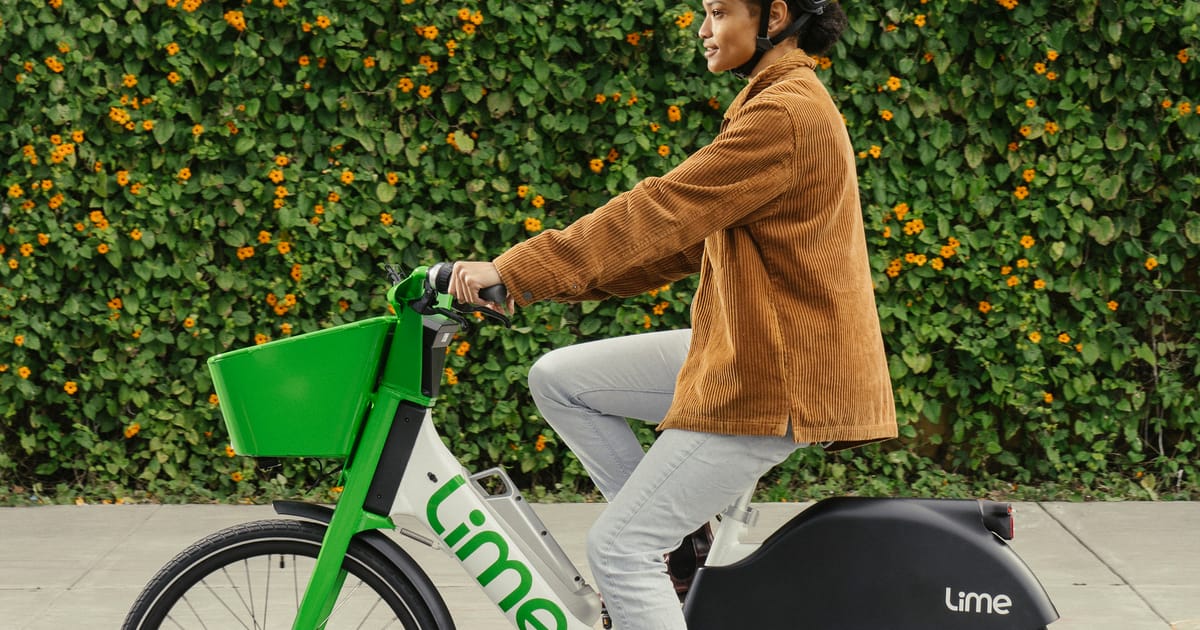
Lime decreased refunds by 20% and started measuring the impact of every rollout

20%
5%
In the shift toward greener transportation, Lime stands out as a prominent champion.
Founded only 6 years ago in 2017, Lime is one of the fastest growing consumer apps in the world and has sparked a revolution within the ride-sharing market.
Building a strong recurring business
Lime’s rider team has the task of driving the company’s expansion while fostering a sustainable business model. This involves continuously creating and testing new features across various user segments.
Omar Guenena, an Engineering Manager who has been at Lime since 2019, shares their vision: "We aim to establish ourselves as a reliable, cost-effective choice for individuals seeking daily travel solutions.”
This team is a high-performing cross-functional unit of 40 stakeholders from Engineering, Product, Data Science and Global Operations. A key focus for them is ensuring features genuinely delight users while advancing business metrics.

Omar Guenena
Automating experimentation at scale
An experimentation culture had always been part of Lime’s DNA. However, before adopting Statsig, self-service functionality was absent. This meant that each experiment had to be manually overseen by the Data Science team – which introduced bottlenecks.
They needed to overhaul their experimentation process to keep up with their rapid growth, as existing resources were insufficient.
“We would have faced scalability challenges if we needed as many Data Scientists as Engineers.”
Key pain points
- Lack of self-service for stakeholders to view and analyze experiments
- Bottlenecks and slow progress due to dependency on Data Science to make decisions
- Existing internal tooling lacked transparency in results and embedded metrics
Lime contemplated the possibility of building an internal experimentation platform versus procuring one, yet promptly recognized that the latter was the more prudent choice. “We don’t have the bandwidth in house to develop an experimentation platform — which isn’t our domain, and we couldn’t risk affecting the business if something went wrong.”
Enter Statsig: The confidence to ship faster
Lime evaluated over 6 different vendors and finally chose Statsig for a variety of reasons. Omar and his team were excited to partner with Statsig for fueling their long-term growth because of the pace at which Statsig was adding new capabilities.
”Every time I spoke to Vineeth and the Enterprising Engineering team, they would show me new features they built. We realized that Statsig was investing in the right areas that will benefit us in the long-term”, said Omar when asked what motivated them to pursue a partnership with Statsig.
Primary advantages highlighted by Lime during evaluation:
- Clarity of results in Statsig that won the trust of stakeholders
- Confidence to run more experiments
- Robust stats engine
- Straightforward, intuitive UI that made data accessible to the entire organization
- Ease of use of server SDK (which ensured effortless integration)
- Prospect for forging a lasting partnership
”Within a week of signing the contract, we ran our first experiment—that was very cool!”
Big wins from simple, yet game-changing features
With Statsig, Lime was able to accelerate their experimentation velocity and began rolling out a range of innovative features that drove top-line growth.
1. Decreased refunds by 20% through improved tutorials for new users
In order to empower first-time users to have a seamless experience, Lime developed a “how to take your first trip” tutorial and ran an experiment to study its impact on refunds requested by first-time riders. This became a winning feature, driving down the refund rate by 20%, and significantly impacting top-line metrics.
2. A creative gif that reduced canceled trips by 5%
Similarly, Lime developed and tested a simple, elegant gif that showed users how to kick the scooter stand to start the scooter and that empowered users to seamlessly start their ride and reduced short or canceled trips (trips that end prematurely) by 5%.
Scaling experimentation and shipping winning features
Statsig swiftly became an essential component of the company’s initiatives, enabling teams to comprehensively test and validate their features before rolling them out.
-
IoT teams jump on board: Statsig’s usage soon went beyond the rider team as the vehicle team started running experiments on devices (bikes). They now test new firmware updates by comparing a test group of bikes with older bikes to validate the impact on vehicle metrics such as TVD (trips per vehicle per day). Omar highlights the technical nuances of running experiments on the app vs vehicle, “When conducting an experiment within an app, obtaining a configuration from the cloud and modifying the app experience is straightforward. However, for bikes, the process varies, requiring different methods to assign bikes to specific treatments or configurations.”
-
Marketing/Growth teams get better visibility into the performance of campaigns: Then, growth teams were empowered to experiment the effects of serving coupons to users. They were able to understand the impact of pricing changes on user metrics and the impact of coupons and passes on retention.
Summary of key objectives & metrics
- Increasing usage (number of trips per user)
- Improving retention and stickiness
- Maximizing revenue per trip
- Optimizing trips per vehicle per day (TVD)
- Reducing canceled trips and refunds
- Enhancing the user experience (making it easier to park the bike, for example)
”For each of these metrics, we ran experiments to ensure that the features we built were aligned with our goals.”
Lime would start with an objective and work backward to design an experiment, continuously monitoring the impact of their features.
“The growth team looks to optimize pricing by changing prices and studying how users respond. In this case, ‘bookings’ would be the primary metric, while ‘number of trips’ and ‘retention’ would be secondary metrics.”
Honing the experimentation culture
Lime used Statsig to test and rollout several winning features such as:
- Group ride, enabling users to unlock multiple scooters with their app
- Destination entry which provides real-time navigation during the ride
- Lime Prime, a subscription service offering discounted rates for a bundle of rides
Experimentation opened up opportunities to innovate and tackle Lime’s key business issues from new angles. “In enhancing parking, we explored the use of AR to scan the surroundings and evaluate its impact on the parking experience. Does it expedite parking times? Are there any glitches? Likewise, with Lime Prime, does the promotion of a pass stimulate increased trip activity?”
Knowing answers to such questions allowed Lime to analyze the impact of their features and make informed product/business decisions.
Omar and his team have also been actively engaging on Statsig’s Slack community. “We’ve taken a lot of advice on experimentation from the Slack channel and that has helped us coach Engineers on the team to run better experiments”, says Omar who is very proud of how much the team has grown in the last couple of years.
”Initially, only a few team members had an experimentation mindset, but now it’s great to see the entire team on board.”
The next phase of growth
Reflecting on Lime’s substantial experimentation expansion, Omar notes, "From waiting for a couple of months to get data for a test, we now test every little thing before rolling it out and measure impact in near real-time.”
For the next phase of growth, Omar wants to strengthen their experimentation culture by ensuring every experiment has a hypothesis. “Is there an expected change that will be big enough to justify running an experiment? Do we have the right metrics for this specific experiment? We’re now focusing on the quality of the experiments we run, not just quantity.”
“I’m always a fan of the new features rolled out by Statsig and I’m looking forward to all the new ones to come!”
About Lime
Founded in 2017, Lime is the largest and most experienced micro mobility operator in the world. They serve more than 250 cities in over 35 countries, deploying more than 250,000 e-bikes, e-scooters, and adaptive vehicles every day. Lime riders have taken more than 400 million rides – 99.99% of which have been incident-free globally – saving over 3.1 million tons of CO2 from the atmosphere.